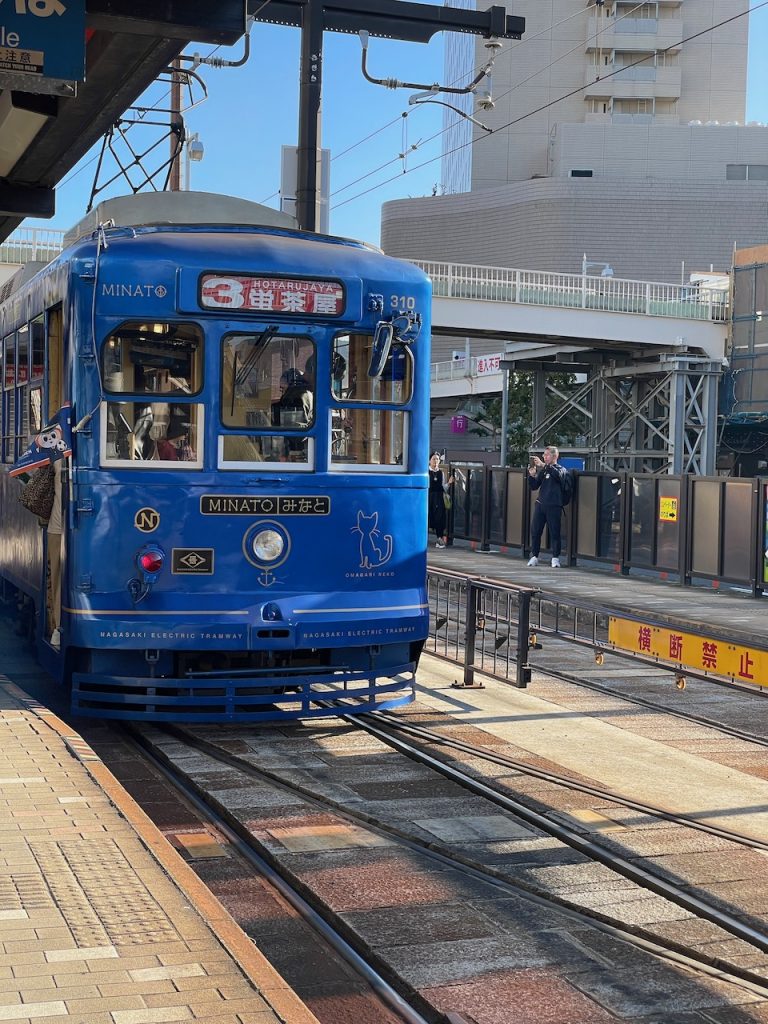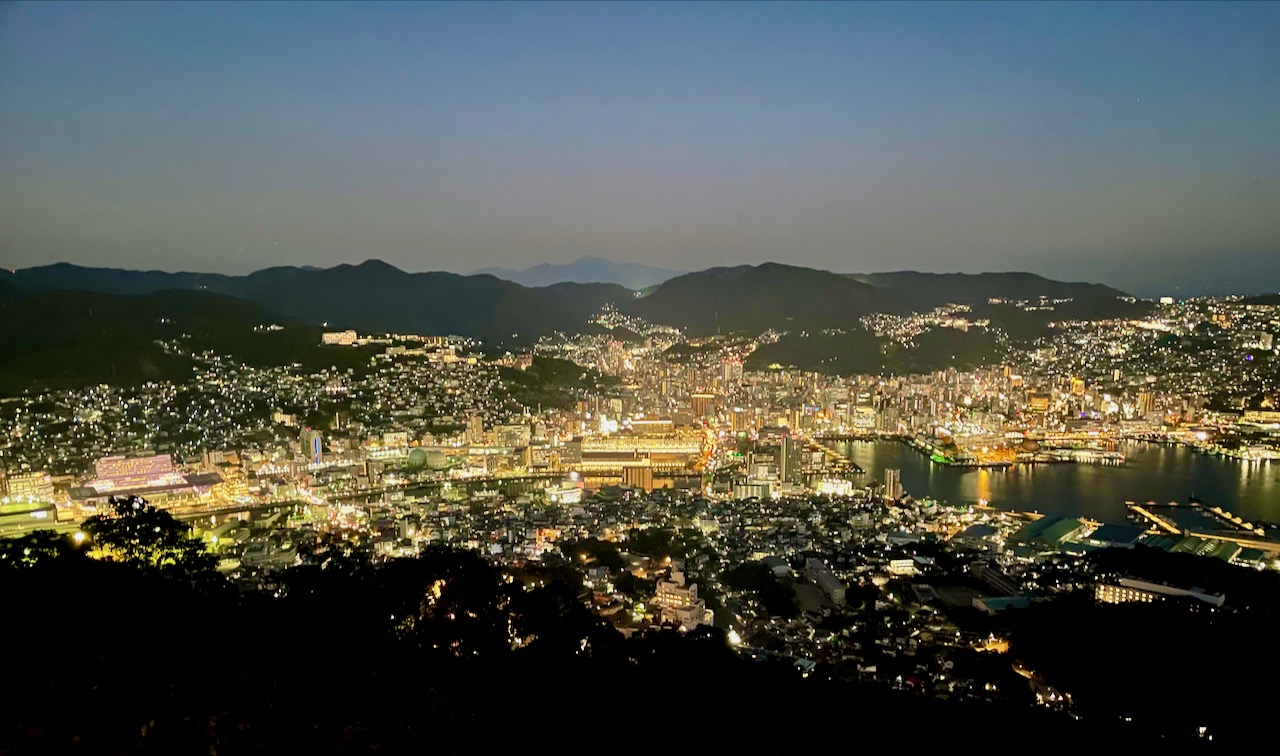Japanese sweets are the superior sweet in the world and I will fight about this. They’re not too rich, not too sweet, not too big – just right. The true goldilocks of treats. And I also really love seeing how Japan localizes and spins desserts from other countries, especially when matcha gets added.
And this is how we met the shiro noir (white black) – Patrick’s breakfast on our last full day in Nagasaki.
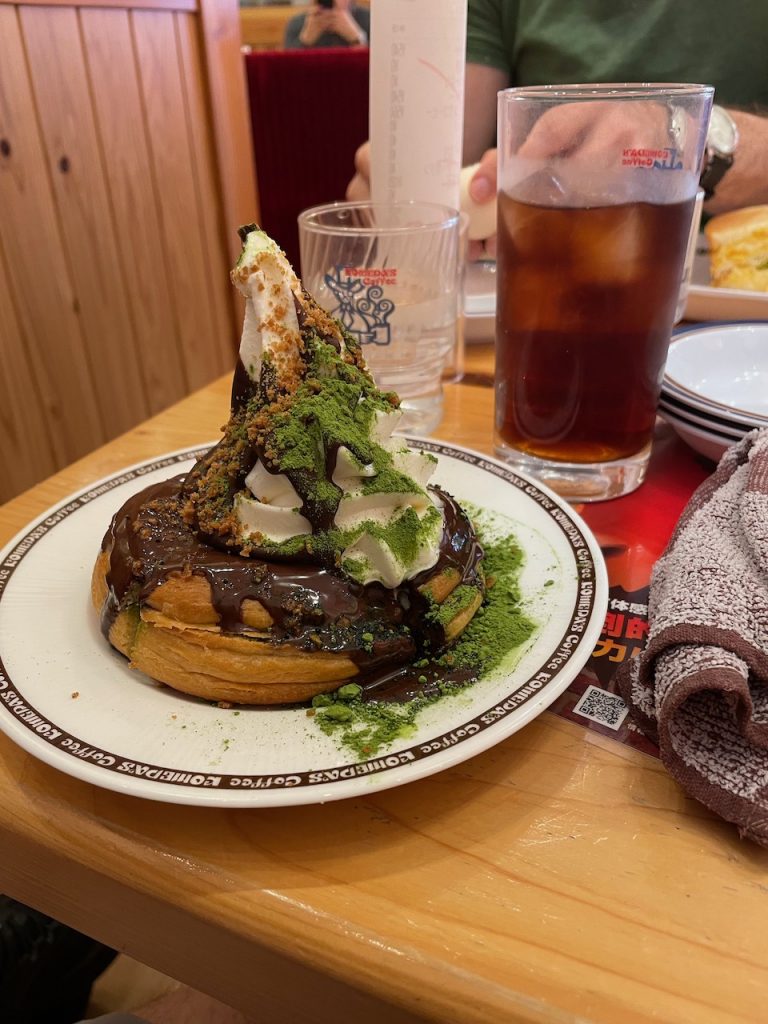
It was from Komeda coffee, a small diner chain. They have normal food, which you can get if you’re a square (it’s me, I’m a square). Not Patrick. He gets the shiro noir, which I guess is what it’s like if a croissant and a pancake had a baby and then ice cream went. on top? The base pastry is originally from Denmark according to the internet. The shiro noirs at Komeda come with a lot of toppings – this one is matcha and chocolate with ice cream. It is divine and not too sweet. IDK why Japan invented this dessert (breakfast?), but clearly the world is better for it.
The atomic bomb memorial & museum is just up the street from our decadent and bracing breakfast. It’s my first time to the one in Nagasaki (because it’s my first time in Nagasaki, shokku) and I’m curious to see how it will be different.
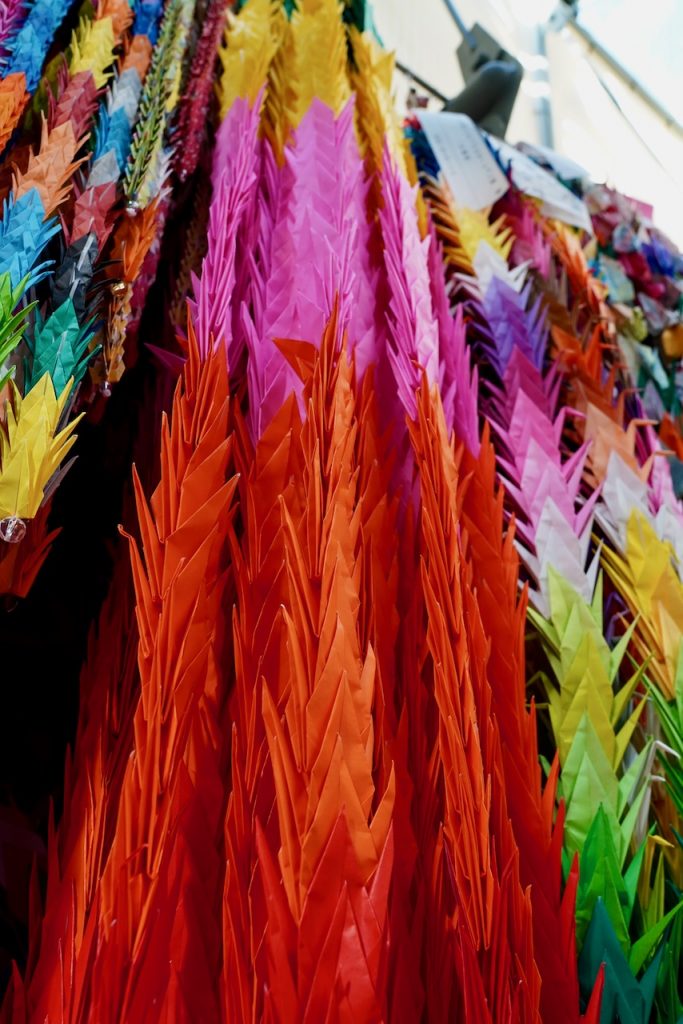


The museum showcases a lot of rubble, melted objects, twisted steel, and other items destroyed by the blast. There is rubble you can touch to feel what the melted surface is like. The heat was incredible, with objects leaving heat shadows on walls or concrete if they were between the blast and a wall. The bomb fell further from the planned target, in a valley, so the horrific destruction could have been so much worse.

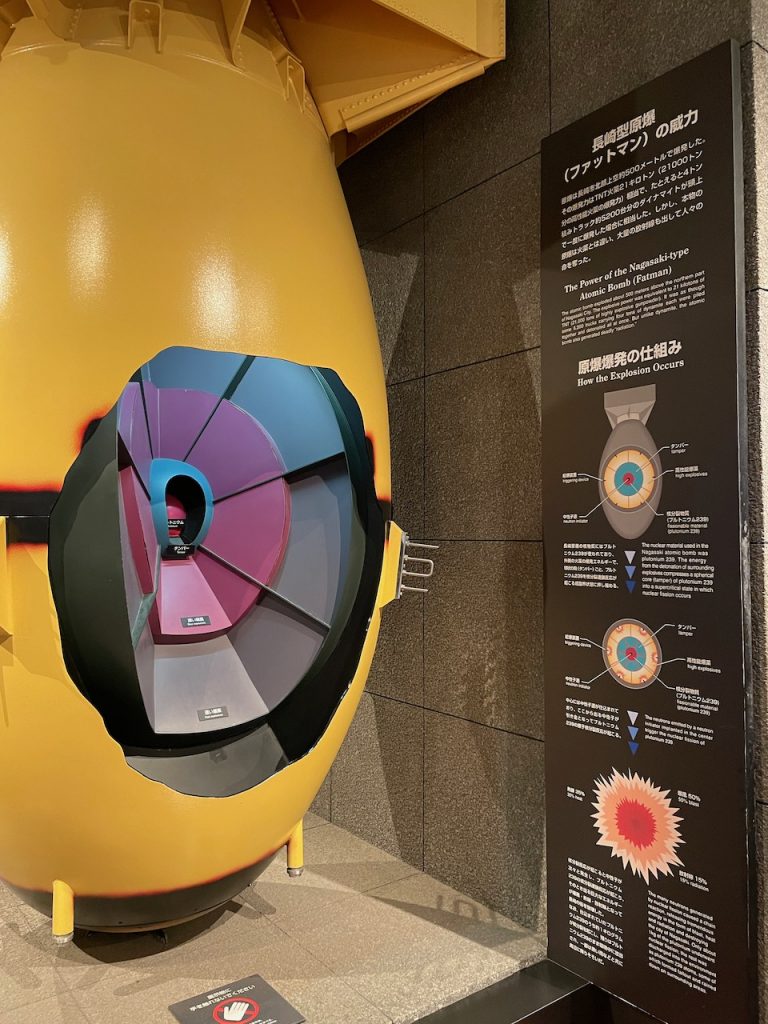

Please meet the picture that will live with me forever, this heat shadow of a lookout who was vaporized by the blast. (Now it can live with you, too!)
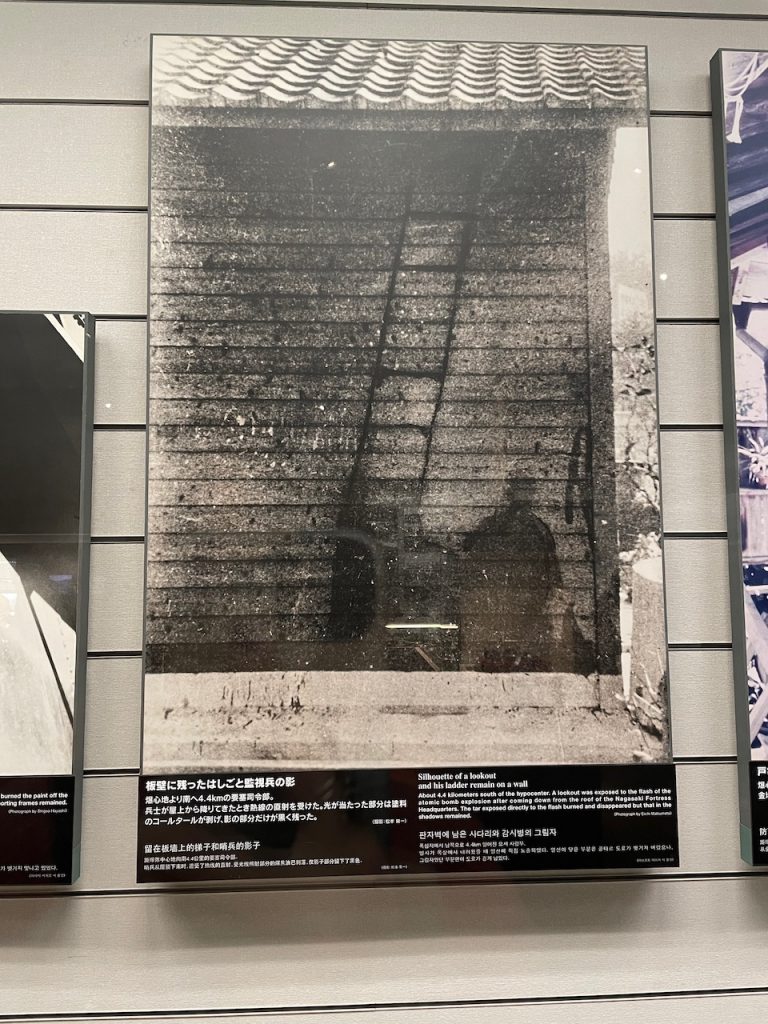
Notably different from the one in Hiroshima, this one focuses a lot on the stories & trauma of the hibakusha (atomic bomb victims). People lived in pain the rest of their lives, suffering unimaginable mental & physical trauma from the radiation and social stigma. Many spent their lives advocating for peace & no more Nagasakis, but many more just tried to cope with their injuries, forever unable to return to any semblance of their previous lives.
The museum of course has displays dedicated to nuclear arms proliferation and the adverse impact continued nuclear testing has on the world, as well as efforts to disarm and de-escalate nuclear arms.


The museum does talk briefly about the selection of Japan and Japanese cities as targets. They cover how the wartime American administration wanted to show the fruits of their massive investment in the Manhattan project, which played a very large role in the decision (thanks, sunk cost fallacy).
The piece they omit in the museum is the factor race played in all of the anti-Japanese war propaganda by the allies. Japanese people were often depicted as savages and barbarians, largely due to cultural and physical differences between Western culture.
Japan would not have held out that much longer in WWII – while surely there were Allied lives spared by using the atomic bomb (twice!), was the amount of suffering, cruelty, and pain on citizens really an appropriate price to pay? It’s something every visitor to the museum should think about.
We make sure to visit the memorial for the victims before we head out – it has over 200,000 victims registered. The exterior is surrounded by water, which is what so many victims craved before they succumbed to their injuries.

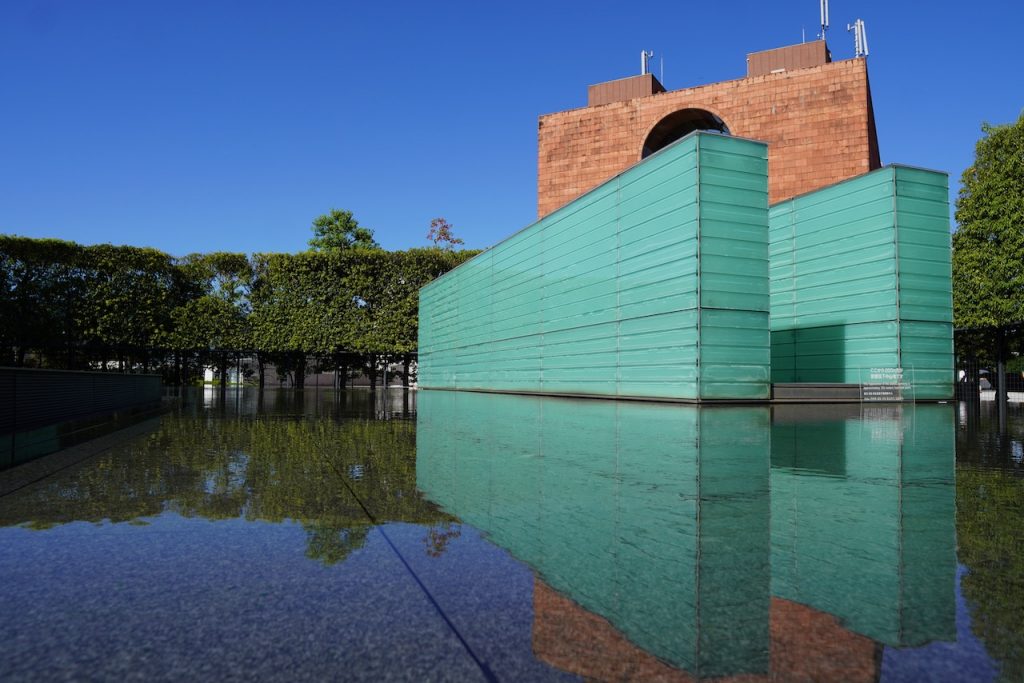
Once we’re done with the very somber and meaningful visit, we walk through peace park. Nagasaki has a monolith marking the epicenter of the explosion, and several statues dedicated to the victims and to peace.
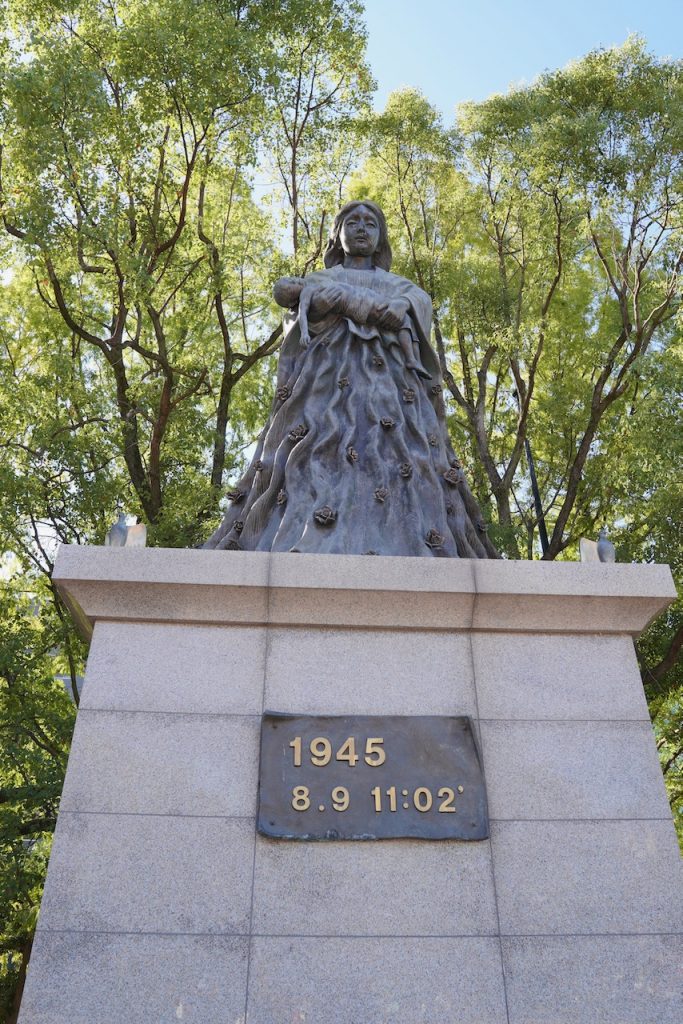
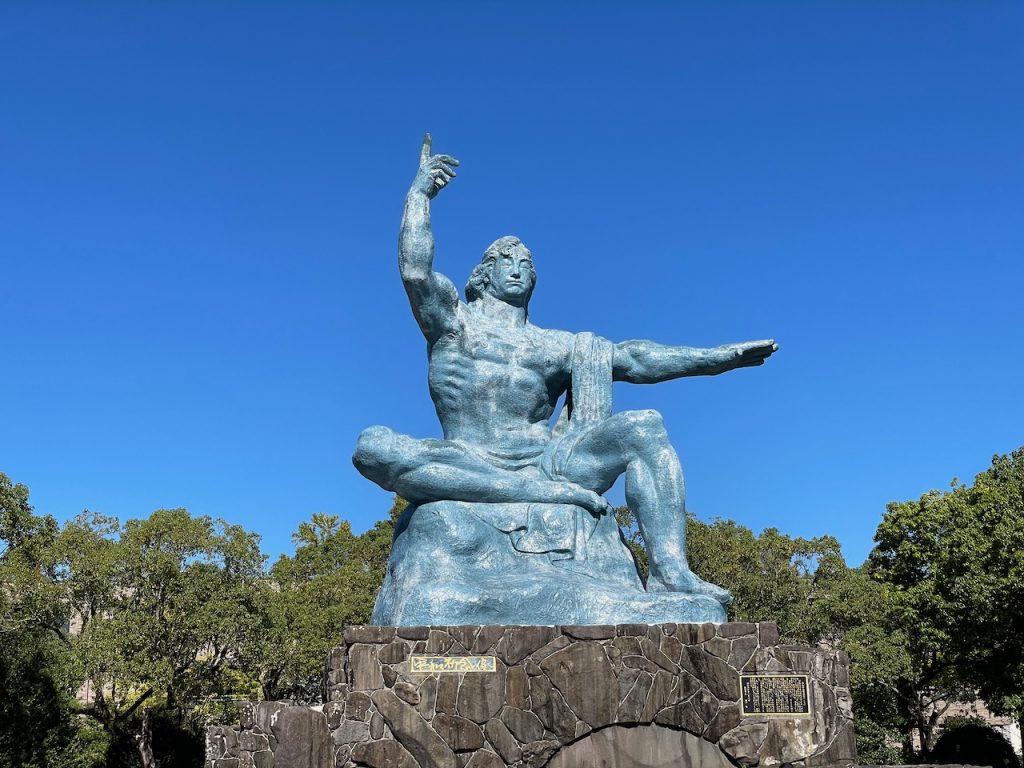
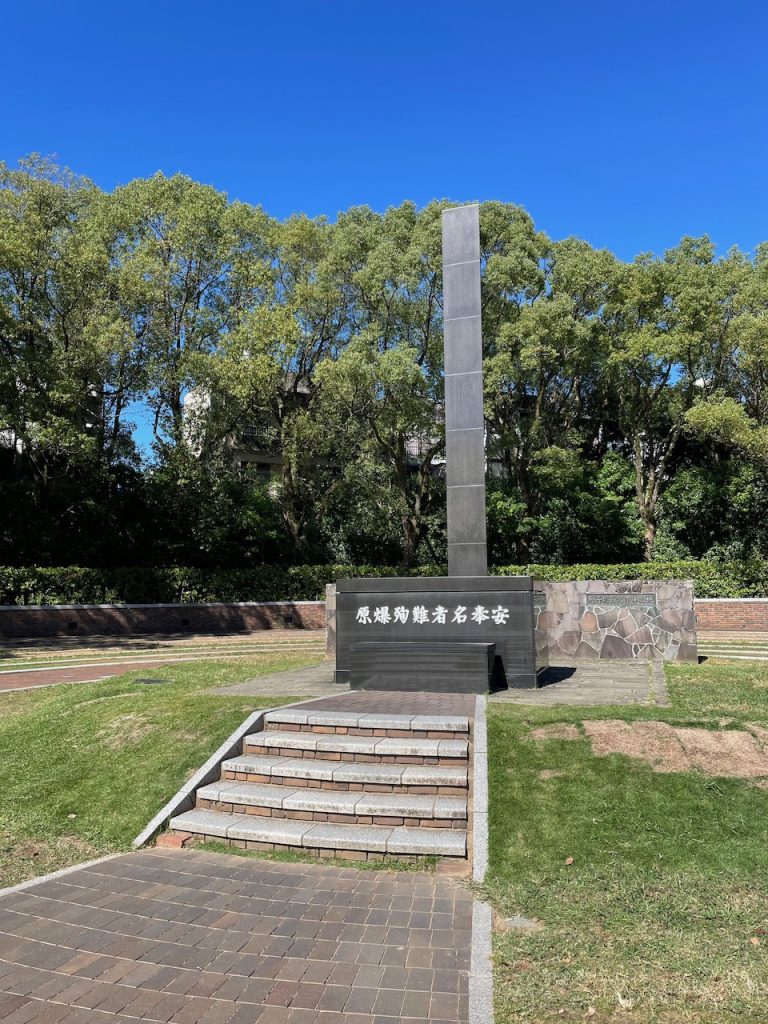
No more Nagasakis, indeed.
We need to bring joy to our soul, so we make a quick stop at Starbucks for its halloween drink, an acai berry frappuccino with chocolate cat ears on top! It’s by far the sweetest thing I’ve had in this country to date (yes, sweeter than the shiro noir!) – like American sweet – but the chocolate quality is top-tier and it is of course super adorable.
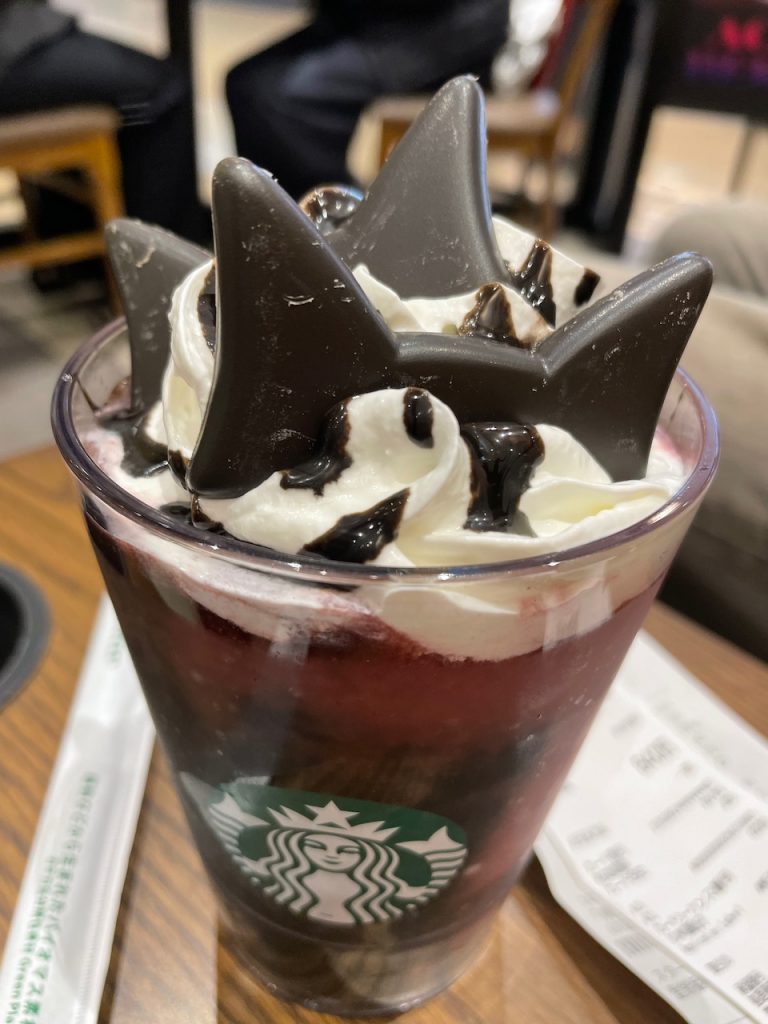
Acai berry cat drinks inside us now, our next activity is a bit lighter – a visit to nearby Sanno shrine and the famous one-legged Torii. While the shrine was entirely obliterated in the blast, one leg of the stone gate still remains, charred with black from the blast.

I was kinda surprised that they didn’t have the other half in the museum, but it’s lying next to its other half at the top of the hill.
This shrine has a super cool surprise – on top of being a wooded, tranquil retreat, it has two ancient camphor trees, which survived the blast!
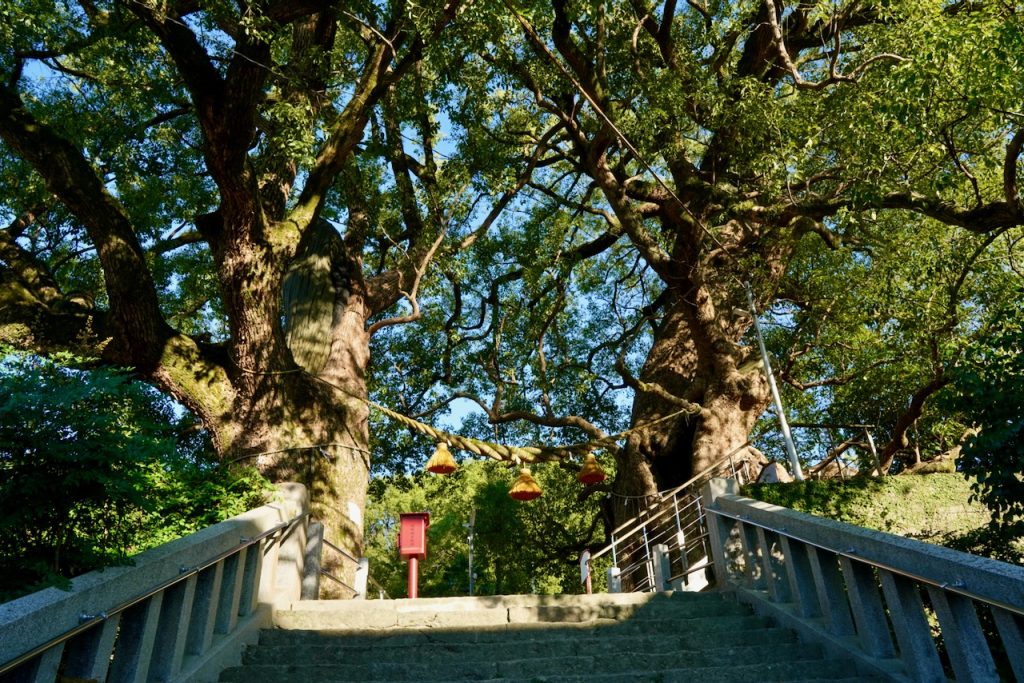
Apparently, they thought the 500 year old trees were dead, but they sprouted back to life ten years later. The shrine has taken care to cover the trees’ wounds and they’ve becoming a sign of vitality and vigor following the bombing.
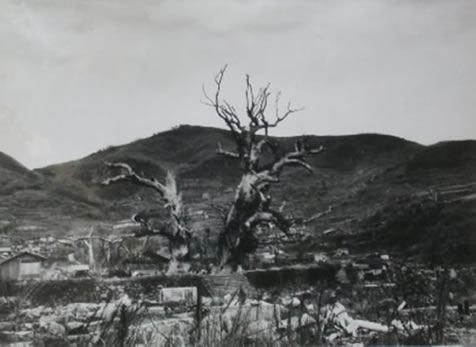

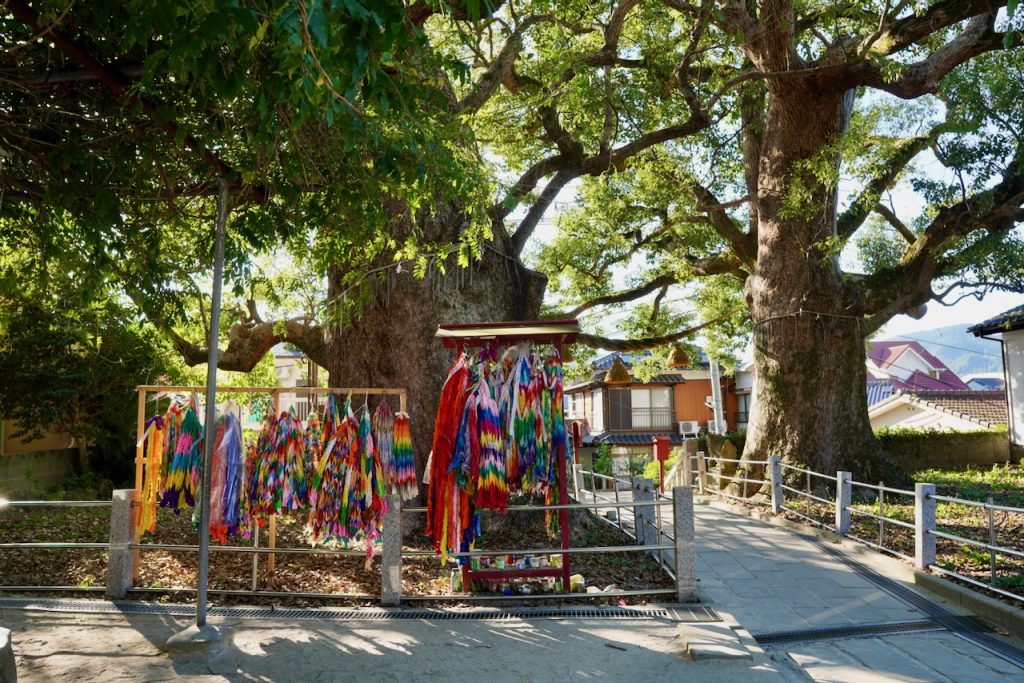
Finally, we round out our evening with a trip up nearby Mt Inasa – you ride a gondola up to the observatory and the view up top is gorgeous.
It’s apparently one of the top 3 nighttime views in the world, which they’re very proud of. It’s really lovely at sunset, though it’s also very very cold today.
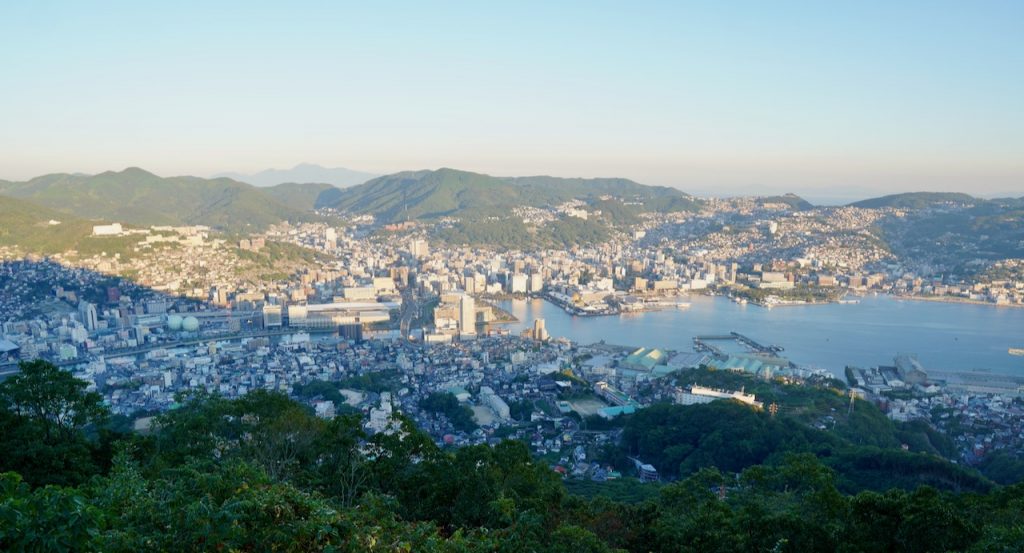
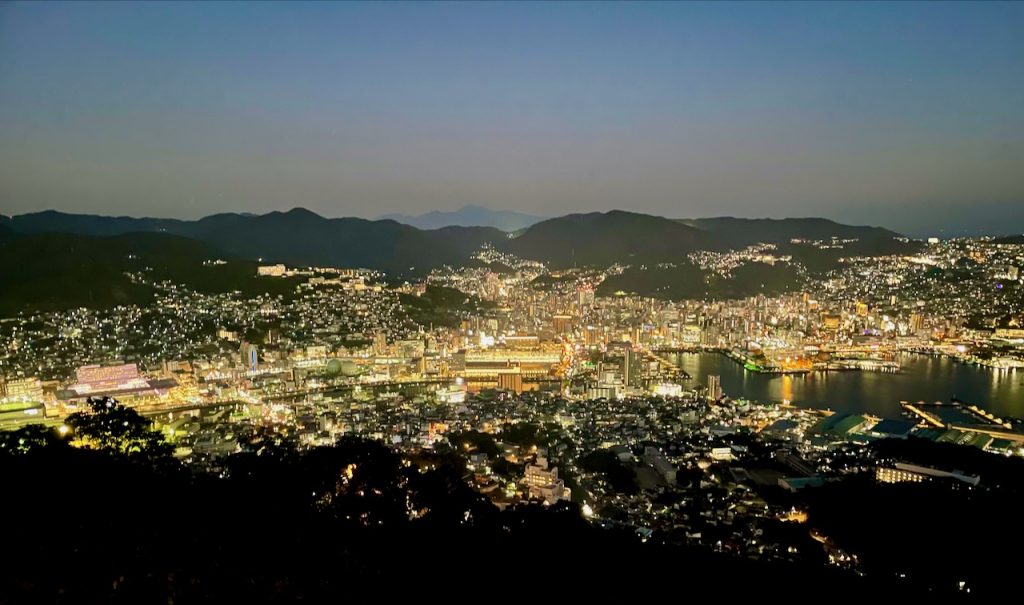
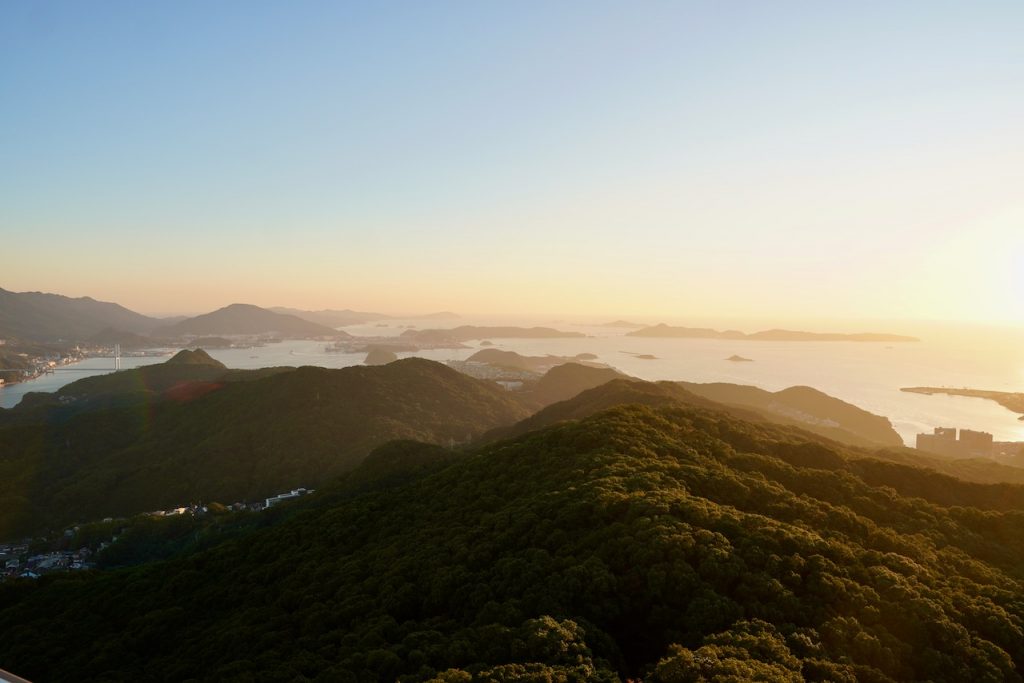
Our final dinner in Nagasaki is pasta – pasta from the train station, which is all the pasta dishes Japan borrowed from Italy and made Japanese. You get fun mash-ups like soy sauce mushroom spaghetti, spaghetti napolitan (aka ketchup spaghetti), and japanese carbonara. I really love the pasta places like this and it’s kinda a crime on my part that I didn’t take Rhett here last spring! My b.
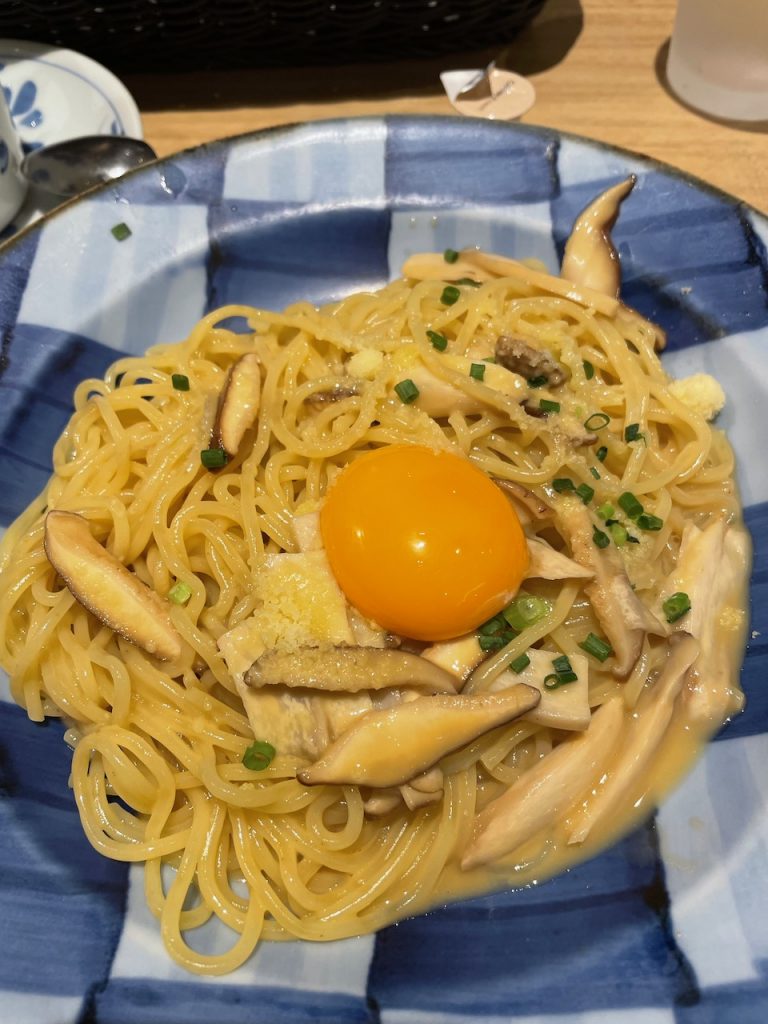
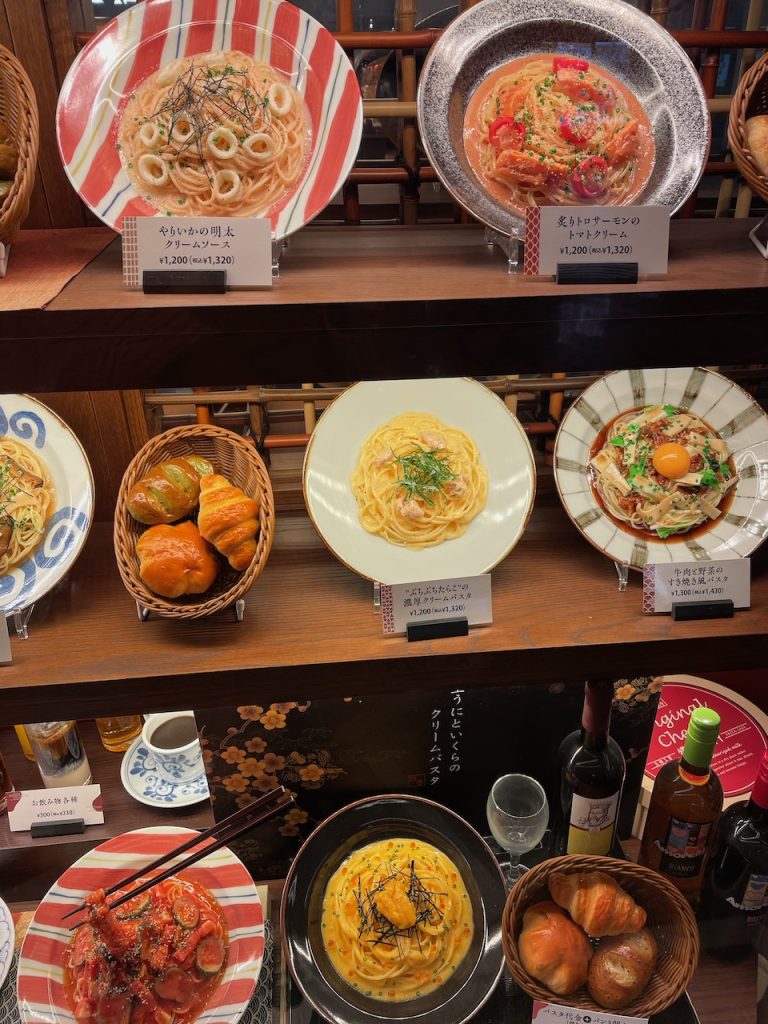
So let this be a lesson to you: when you go to Japan, eat fun Japanese pasta at least one time.
On our last morning, we headed to the Nagasaki museum of history & culture, which boasts both a massive crowd of school children (oh right, those exist) and a super cool Pokemon special exhibit that mixes pokemon with a blend of traditional & contemporary art techniques.
The children are on a field trip and will have to do their Japanese history stuff, so we hit the pokemon first.
Oh my god what a treat – it was SO cool to see pokemon crafted in traditional japanese styles. There was a lot of pottery, an infinite world vase, kimono patterns, and really cool wooden figures. We take a long time here because it’s so amazing.
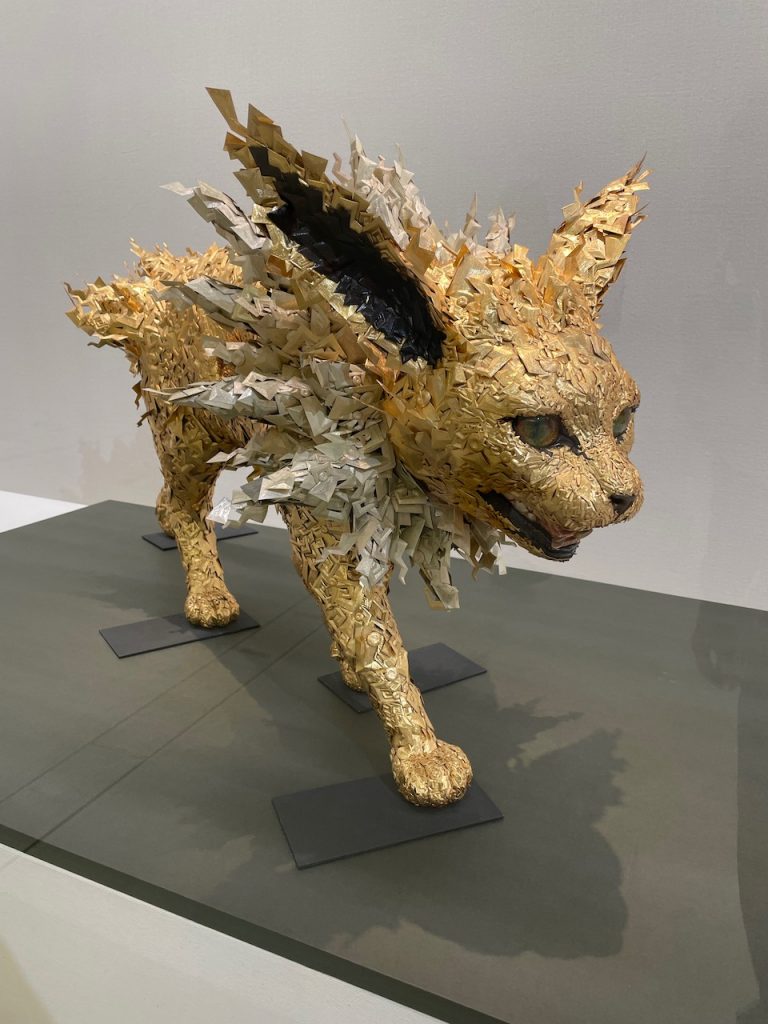
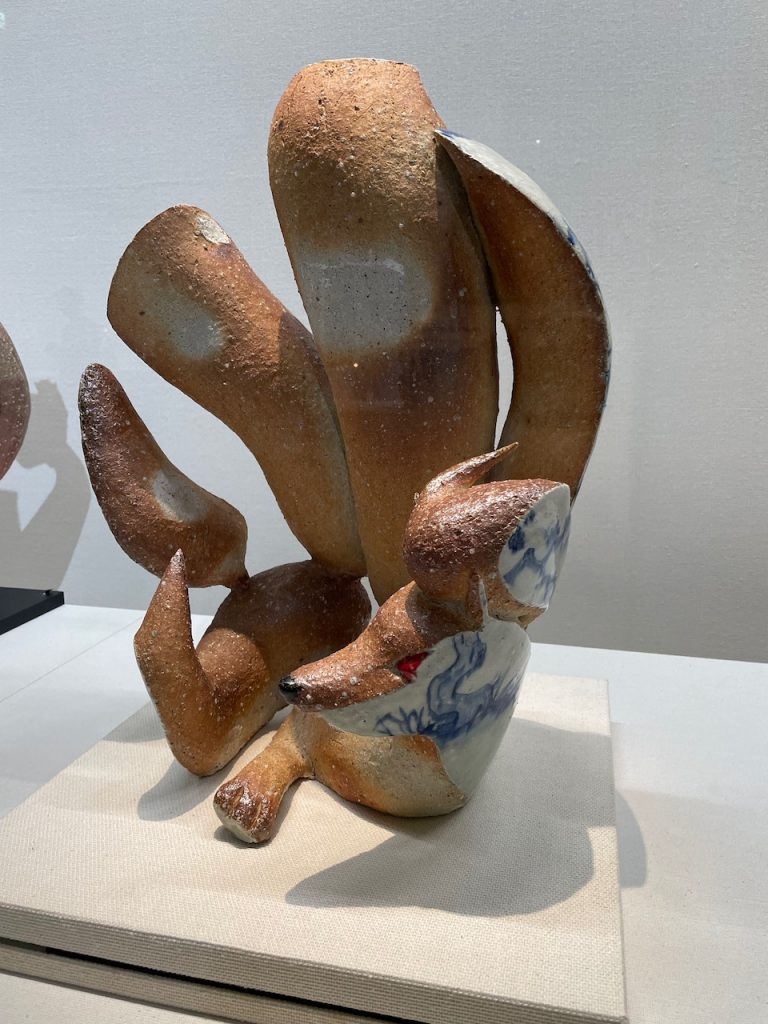
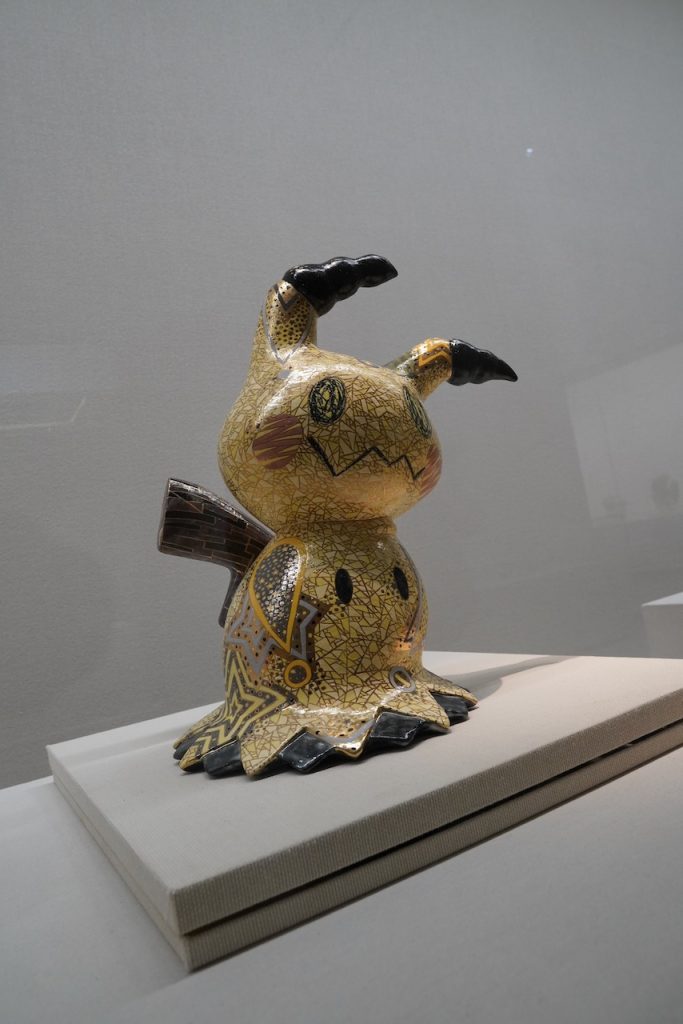

We do a speed run through the main floor, which has more pre-dutch trading artifacts, reconstructed tea rooms, and a gorgeous garden. I wish we had maybe an extra half hour, but I’m glad we got to see the museum!



Because of the pokemon exhibit, the museum shop is extra-powerful and I cannot resist its siren song. I buy a big hardcover book all about the exhibit. I now must lug the book around everywhere. This will definitely bite me if I have to say, run up a massive flight of stairs very rapidly to catch a train.
🎶 foreshadowing 🎶

There’s really a lot to do in Nagasaki and the surrounding area. I’d love to come back sometime to explore more!
